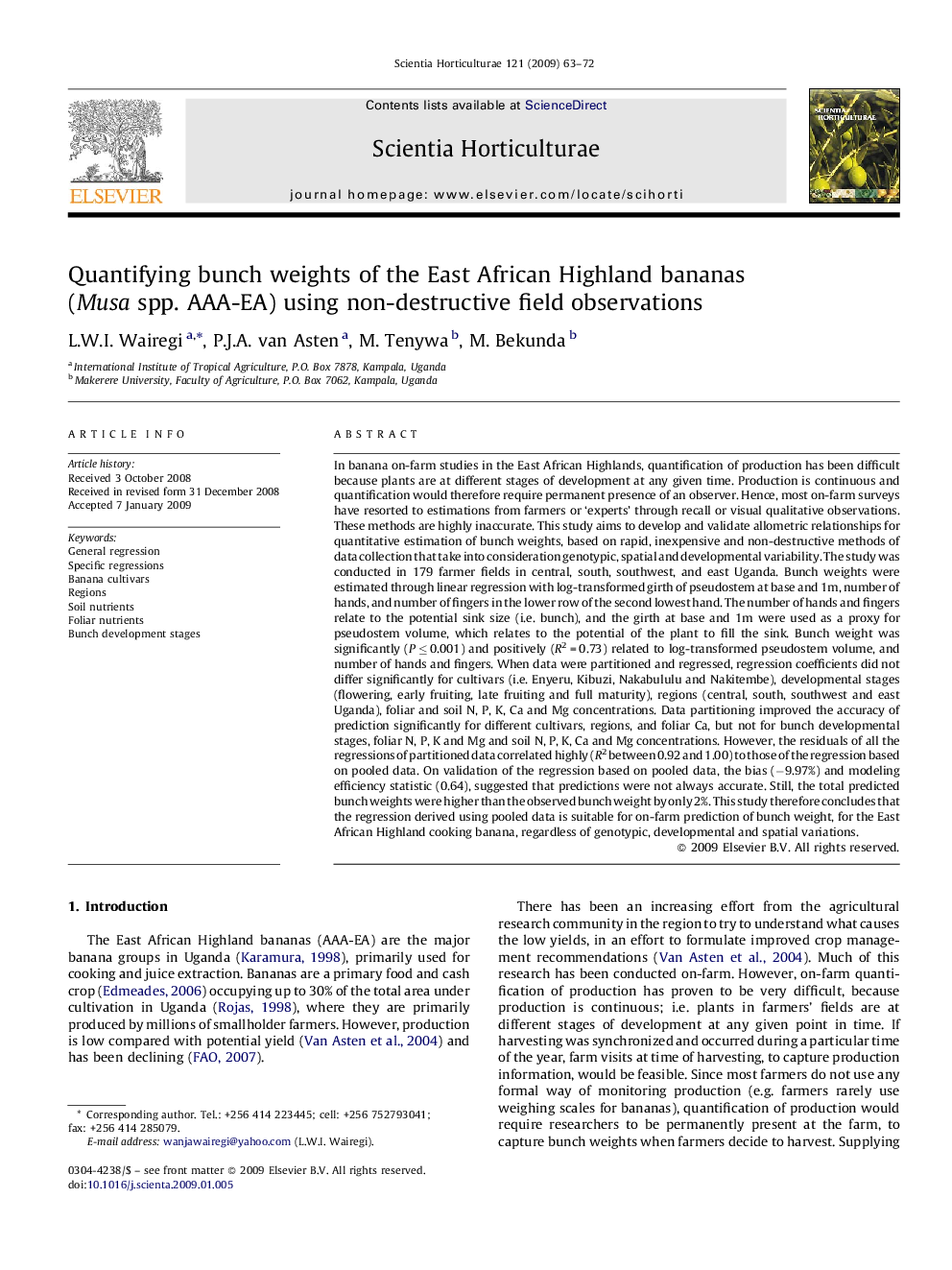| Article ID | Journal | Published Year | Pages | File Type |
|---|---|---|---|---|
| 4569083 | Scientia Horticulturae | 2009 | 10 Pages |
In banana on-farm studies in the East African Highlands, quantification of production has been difficult because plants are at different stages of development at any given time. Production is continuous and quantification would therefore require permanent presence of an observer. Hence, most on-farm surveys have resorted to estimations from farmers or ‘experts’ through recall or visual qualitative observations. These methods are highly inaccurate. This study aims to develop and validate allometric relationships for quantitative estimation of bunch weights, based on rapid, inexpensive and non-destructive methods of data collection that take into consideration genotypic, spatial and developmental variability. The study was conducted in 179 farmer fields in central, south, southwest, and east Uganda. Bunch weights were estimated through linear regression with log-transformed girth of pseudostem at base and 1m, number of hands, and number of fingers in the lower row of the second lowest hand. The number of hands and fingers relate to the potential sink size (i.e. bunch), and the girth at base and 1m were used as a proxy for pseudostem volume, which relates to the potential of the plant to fill the sink. Bunch weight was significantly (P ≤ 0.001) and positively (R2 = 0.73) related to log-transformed pseudostem volume, and number of hands and fingers. When data were partitioned and regressed, regression coefficients did not differ significantly for cultivars (i.e. Enyeru, Kibuzi, Nakabululu and Nakitembe), developmental stages (flowering, early fruiting, late fruiting and full maturity), regions (central, south, southwest and east Uganda), foliar and soil N, P, K, Ca and Mg concentrations. Data partitioning improved the accuracy of prediction significantly for different cultivars, regions, and foliar Ca, but not for bunch developmental stages, foliar N, P, K and Mg and soil N, P, K, Ca and Mg concentrations. However, the residuals of all the regressions of partitioned data correlated highly (R2 between 0.92 and 1.00) to those of the regression based on pooled data. On validation of the regression based on pooled data, the bias (−9.97%) and modeling efficiency statistic (0.64), suggested that predictions were not always accurate. Still, the total predicted bunch weights were higher than the observed bunch weight by only 2%. This study therefore concludes that the regression derived using pooled data is suitable for on-farm prediction of bunch weight, for the East African Highland cooking banana, regardless of genotypic, developmental and spatial variations.
